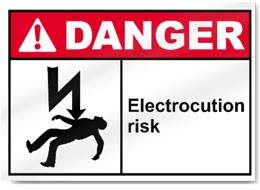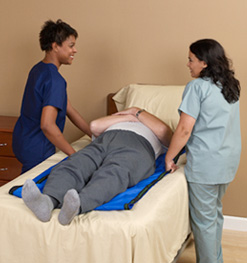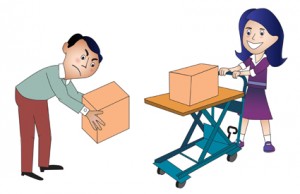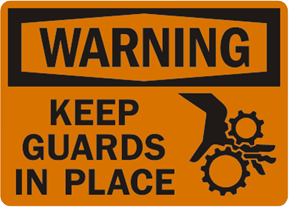 Studies show that the ratio of indirect costs to direct costs varies widely, from a high of 20:1 to a low of 1:1. OSHA has shown that the lower the direct costs of an accident, the higher the ratio of indirect to direct costs (ranging from 4.1/1.0 to 1.1/1.0). Examples of indirect costs include training replacement employees, accident investigation and implementation of corrective measures, lost productivity, repairs of damaged equipment and property, and costs associated with lower employee morale and absenteeism.
Studies show that the ratio of indirect costs to direct costs varies widely, from a high of 20:1 to a low of 1:1. OSHA has shown that the lower the direct costs of an accident, the higher the ratio of indirect to direct costs (ranging from 4.1/1.0 to 1.1/1.0). Examples of indirect costs include training replacement employees, accident investigation and implementation of corrective measures, lost productivity, repairs of damaged equipment and property, and costs associated with lower employee morale and absenteeism.
Category: Work Comp
Electrical Safety
 Electrical current exposes workers to a serious, widespread occupational hazard; practically all members of the workforce are exposed to electrical energy during the performance of their daily duties, and electrocutions occur to workers in various job categories. Many workers are unaware of the potential electrical hazards present in their work environment, which makes them more vulnerable to the danger of electrocution.
Electrical current exposes workers to a serious, widespread occupational hazard; practically all members of the workforce are exposed to electrical energy during the performance of their daily duties, and electrocutions occur to workers in various job categories. Many workers are unaware of the potential electrical hazards present in their work environment, which makes them more vulnerable to the danger of electrocution.
via CDC – Electrical Safety – NIOSH Workplace Safety and Health Topic.
Safe Patient Handling
 Rates of musculoskeletal injuries from overexertion in healthcare occupations are among the highest of all U.S. industries. Data from the Bureau of Labor Statistics (BLS) show that in 2011, the rate of overexertion injuries averaged across all industries was 38 per 10,000 full time workers.By comparison, the overexertion injury rate for hospital workers was twice the average (76 per 10,000), the rate for nursing home workers was over three times the average (132 per 10,000), and the rate for ambulance workers was over six times the average (238 per 10,000). The single greatest risk factor for overexertion injuries in healthcare workers is the manual lifting, moving and repositioning of patients, residents or clients, i.e., manual patient handling.
Rates of musculoskeletal injuries from overexertion in healthcare occupations are among the highest of all U.S. industries. Data from the Bureau of Labor Statistics (BLS) show that in 2011, the rate of overexertion injuries averaged across all industries was 38 per 10,000 full time workers.By comparison, the overexertion injury rate for hospital workers was twice the average (76 per 10,000), the rate for nursing home workers was over three times the average (132 per 10,000), and the rate for ambulance workers was over six times the average (238 per 10,000). The single greatest risk factor for overexertion injuries in healthcare workers is the manual lifting, moving and repositioning of patients, residents or clients, i.e., manual patient handling.
via CDC – Safe Patient Handling – NIOSH Workplace Safety and Health Topic.
Motor Vehicle Safety
![]() Motor vehicle-related incidents are consistently the leading cause of work-related fatalities in the United States. Thirty-six percent of occupational fatalities reported by the Bureau of Labor Statistics are associated with motor vehicles. Between 2003-2010, on average:
Motor vehicle-related incidents are consistently the leading cause of work-related fatalities in the United States. Thirty-six percent of occupational fatalities reported by the Bureau of Labor Statistics are associated with motor vehicles. Between 2003-2010, on average:
- 1,275 workers died each year from crashes on public highways
- 311 workers died each year in crashes that occurred off the highway or on industrial premises.
- 338 pedestrian workers died each year as a result of being struck by a motor vehicle.
Source: U.S. Department of Labor, Bureau of Labor Statistics
via CDC – Motor Vehicle Safety – NIOSH Workplace Safety and Health Topic.
Prevention of Musculoskeletal Disorders in the Workplace
 Musculoskeletal disorders (MSDs) affect the muscles, nerves and tendons. Work related MSDs (including those of the neck, upper extremities and low back) are one of the leading causes of lost workday injury and illness. Workers in many different industries and occupations can be exposed to risk factors at work, such as lifting heavy items, bending, reaching overhead, pushing and pulling heavy loads, working in awkward body postures and performing the same or similar tasks repetitively. Exposure to these known risk factors for MSDs increases a worker’s risk of injury.
Musculoskeletal disorders (MSDs) affect the muscles, nerves and tendons. Work related MSDs (including those of the neck, upper extremities and low back) are one of the leading causes of lost workday injury and illness. Workers in many different industries and occupations can be exposed to risk factors at work, such as lifting heavy items, bending, reaching overhead, pushing and pulling heavy loads, working in awkward body postures and performing the same or similar tasks repetitively. Exposure to these known risk factors for MSDs increases a worker’s risk of injury.
But work-related MSDs can be prevented. Ergonomics — fitting a job to a person — helps lessen muscle fatigue, increases productivity and reduces the number and severity of work-related MSDs.
Machine Safety
 Machines can assist in improving production efficiency in the workplace. However these machines have moving parts, sharp edges, and hot surfaces with the potential to cause severe workplace injuries such as crushed fingers or hands, amputations, burns, or blindness. Safeguards are essential for protecting workers from these preventable injuries. Any machine part, function, or process that might cause injury must be safeguarded. When the operation of a machine may result in a contact injury to the operator or others in the vicinity, the hazards must be eliminated or controlled.
Machines can assist in improving production efficiency in the workplace. However these machines have moving parts, sharp edges, and hot surfaces with the potential to cause severe workplace injuries such as crushed fingers or hands, amputations, burns, or blindness. Safeguards are essential for protecting workers from these preventable injuries. Any machine part, function, or process that might cause injury must be safeguarded. When the operation of a machine may result in a contact injury to the operator or others in the vicinity, the hazards must be eliminated or controlled.
via CDC – Machine Safety – NIOSH Workplace Safety and Health Topic.
Chronic Conditions and Aging
 Arthritis and hypertension are the two most common health conditions affecting older workers, impacting 47% and 44%, respectively, of workers over the age of 55. An even greater proportion of workers (more than 75%) are estimated to have at least one chronic health condition that requires management. Diabetes is perhaps the most costly of these; one study found that 1/3 of all Medicare spending goes towards management of diabetes. The frequency of these conditions and others in older adults has important implications for workers can physically perform their duties, but also when. Higher morbidity means more absenteeism when an employee feels sick and more presenteeism when an employee is ill but shows up to work regardless. However, individual health risk factors are a stronger influence on future healthcare associated costs than advancing age alone. In comparing young workers with “high risk” of chronic disease (5 or more risk factors) to older workers with few or no risk factors, the younger workers had significantly higher medical costs associated despite the disparity in the age groups: 19-34 year olds, versus older workers aged 65-74.
Arthritis and hypertension are the two most common health conditions affecting older workers, impacting 47% and 44%, respectively, of workers over the age of 55. An even greater proportion of workers (more than 75%) are estimated to have at least one chronic health condition that requires management. Diabetes is perhaps the most costly of these; one study found that 1/3 of all Medicare spending goes towards management of diabetes. The frequency of these conditions and others in older adults has important implications for workers can physically perform their duties, but also when. Higher morbidity means more absenteeism when an employee feels sick and more presenteeism when an employee is ill but shows up to work regardless. However, individual health risk factors are a stronger influence on future healthcare associated costs than advancing age alone. In comparing young workers with “high risk” of chronic disease (5 or more risk factors) to older workers with few or no risk factors, the younger workers had significantly higher medical costs associated despite the disparity in the age groups: 19-34 year olds, versus older workers aged 65-74.
via CDC – Healthy Aging – NIOSH Workplace Safety and Health Topic.
Stay Safe at Work
 Many people spend a lot of time at work. If work isn’t done safely, it can put a lot of wear and tear on your body. Back injuries are the most common type of workplace injury.
Many people spend a lot of time at work. If work isn’t done safely, it can put a lot of wear and tear on your body. Back injuries are the most common type of workplace injury.
There are things you can do – both at work and at home – to lower your chances of getting hurt or sick.
To prevent injuries and stay healthy at work:
- Lift things safely.
- Arrange your equipment to fit your body.
- Take short breaks and stretch your muscles.
- Eat a healthy diet and stay active.
- Watch your weight.
- Get enough sleep.
- Manage stress.
- Look for health resources at work.
via Stay Safe at Work.
Prevention of Musculoskeletal Disorders in the Workplace
 Musculoskeletal disorders (MSDs) affect the muscles, nerves and tendons. Work related MSDs (including those of the neck, upper extremities and low back) are one of the leading causes of lost workday injury and illness. Workers in many different industries and occupations can be exposed to risk factors at work, such as lifting heavy items, bending, reaching overhead, pushing and pulling heavy loads, working in awkward body postures and performing the same or similar tasks repetitively. Exposure to these known risk factors for MSDs increases a worker’s risk of injury.
Musculoskeletal disorders (MSDs) affect the muscles, nerves and tendons. Work related MSDs (including those of the neck, upper extremities and low back) are one of the leading causes of lost workday injury and illness. Workers in many different industries and occupations can be exposed to risk factors at work, such as lifting heavy items, bending, reaching overhead, pushing and pulling heavy loads, working in awkward body postures and performing the same or similar tasks repetitively. Exposure to these known risk factors for MSDs increases a worker’s risk of injury.
But work-related MSDs can be prevented. Ergonomics — fitting a job to a person — helps lessen muscle fatigue, increases productivity and reduces the number and severity of work-related MSDs.
Work related MSDs are among the most frequently reported causes of lost or restricted work time.
- In 2011, the Bureau of Labor Statistics (BLS) reported that industries with the highest MSD* rates include health care, transportation and warehousing, retail and wholesale trade and construction.
- According to BLS, the 387,820 MSD cases accounted for 33% of all worker injury and illness cases in 2011.
Workplace Injury Reports to Go Online
 For many workers, their jobs may be the most dangerous activities they engage in on a regular basis. On average, twelve people died each day last year from workplace incidents—amounting to over 4,300 deaths. Moreover, nearly 3 million workers suffered injuries or became ill at work last year.
For many workers, their jobs may be the most dangerous activities they engage in on a regular basis. On average, twelve people died each day last year from workplace incidents—amounting to over 4,300 deaths. Moreover, nearly 3 million workers suffered injuries or became ill at work last year.
These statistics actually represent some of the lowest workplace mortality and injury rates in decades, but Secretary of Labor Thomas E. Perez has urged that the government “can and must do better.” To Perez, the statistics “aren’t just numbers and data – they are fathers and mothers, brothers and sisters, who will never come home again.”
In an effort to reduce workplace hazards and prevent injuries, the Occupational Safety and Health Administration (OSHA) recently proposed a new rule that would add requirements for the electronic submission of workplace injury and illness information. In announcing the agency’s proposal, David Michaels, Assistant Secretary of Labor for Occupational Safety and Health, indicated that the new requirements should provide “better access to data that will encourage earlier abatements of hazards and result in improved programs to reduce workplace hazards and prevent injuries, illnesses and fatalities.”
